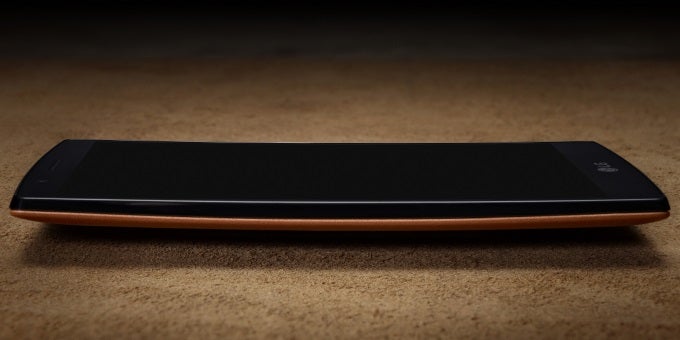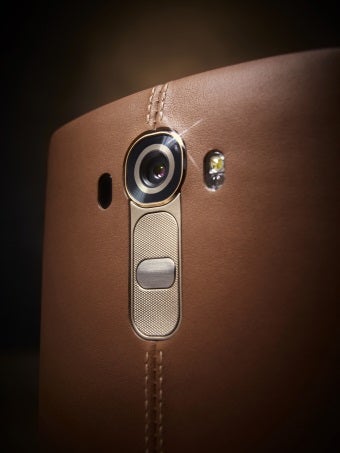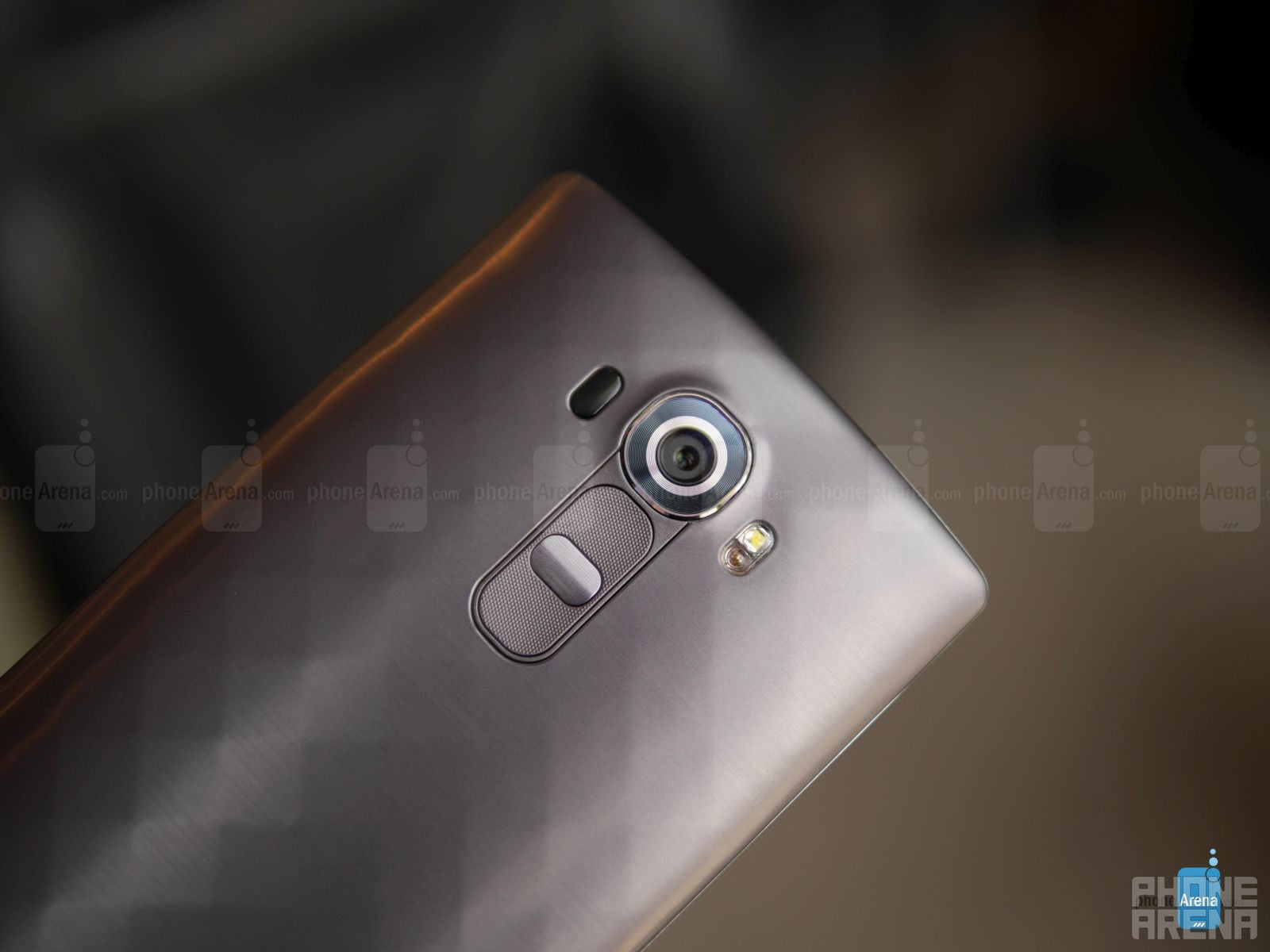LG G4 specs review: altered beast

Introduction
When it launched in May last year, the LG G3 was certainly an impressive fiend. It was the first smartphone to ship with a quad-HD resolution display, in addition to a terrific spec sheet, spearheaded by the aforementuoned screen and the innovative laser auto-focus system. Thanks to moving a good six months ahead of the industry, LG made the LG G3 stay relevant to this day, even as lower-priced and better performing devices eventually matched its superiority. Among these is the new LG G4, poised to continue carrying the torch after its predecessor ascends to the Valhalla of smartphones. The LG G4 contains all the necessary improvements to keep LG in the crazy smartphone-making game for another year. It's time we take a look at the hardware that make this beast tick in the rhythm of a thousand clock cycles!
Display
Some you may have feared (or gleefully anticipated) that LG will make a tradition out of releasing smartphones with higher-than-thou resolution screens each year. For better or worse, the LG G4 doesn't come with a 3K or 4K panel, although this is only the first half of 2015, and who knows what LG or its competitors may be priming for the next couple of quarters! Anyway, the LG G4 packs a 5.5-inch IPS LCD display with a resolution that we're now accustomed to - 1440 x 2560px, with a 538 pixels per inch pixel density. So far, this sounds just like the LG G3 did in 2014, but there's more to the LG G4's screen than meets the eye. It has been tricked out with Quantum technology that LG hypes as a provider of richer colors and stronger brightness output. Apart from purer colors, the Quantum display has a 30 to 40% luminance advantage over OLED screens, and has the potential to be more than twice as power efficient.
Processor and Memory
The LG G4's processing department sees a substantial improvement over the LG G3, as the new flagship is powered by a 64-bit hexa-core Snapdragon 808 CPU and a more advanced Adreno 418 graphics unit. The LG G3 makes do with a quad-core Snapdragon 801 chipset which, despite LG's respectable optimization efforts, did a mediocre job at servicing the QHD display. The Snapdragon 808 strikes us as an unexpected SoC choice, as it has less power on tap than Qualcomm's flagship Snapdragon 810 chipset. However, it doesn't look like we'll be seeing the 810 perform to its fullest potential any time soon, due to the aggressive speed throttling needed to keep its thermals in check. This means the LG G4 has a realistic chance at keeping up with its contemporaries in the performance aspect, and it will certainly work faster than the LG G3 does.
During LG's announcement event and subsequent media coverage, we got to learn that the company had actively participated in the Snapdragon 808's development, almost giving out the impression that Qualcomm built the LG G4 a custom SoC. While that's not entirely the case, there haven't been any other Snapdragon 808-powered smartphones on the horizon yet, which could make the hexa-core chip a sort of a timed exclusive for LG's flagship. Then again, LG's decision to opt for this silicon was, in part, motivated by Qualcomm's roadmap. LG's rivals wanted the Snapdragon 810, as its mass production phase would have coincided with their early 2015 product launches. LG, however, could score the 808 right in time for the LG G4's announcement, and it seems the company was given a chance for direct input over its development as well. Hence, LG and Qualcomm went to work and here's what they ended up with.
The Snapdragon 810 and 808 are cut from the same... wafer, so to speak.
The Snapdragon 810 and 808 are cut from the same... wafer, so to speak. The 808 too is a 20nm chipset, made with stock ARM Cortex-A53 & A-57 64-bit cores. However, whereas the Snapdragon 810 has four powerful Cortex-A57 cores and four economical Cortex-A53 working in tandem depending on the load, the SD 808 has two of the A57 cores, making for a hexa-core configuration. The situation is similar with the graphics processing units that come on both. The SD 810 has an Adreno 430 GPU, whereas the 808 has the Adreno 418 GPU. It's difficult to be certain about the differences between the two, as Qualcomm doesn't disclose its GPU details. Both, however, are based on the chipmaker's latest graphics architecture, and performance estimates portray the Adreno 418 as 20% faster than the Snapdragon 801's Adreno 330 GPU, and the Adreno 430 as 30% faster than the Snapdragon 805's Adreno 420 GPU. A 20% increase is a fair bit of improvement over the LG G3's GPU, which struggled to keep up with the Quad-HD screen under heavier load.Although the Snapdragon 808 may seem under-powered compared to the Snapdragon 810 and Exynos 7420 chipsets found in competing smartphones, we are keen to believe LG made a smart choice. Opting for a more modest chip that was also developed under its supervision could prevent the overheating and throttling problems of the LG G4's predecessor, without significant performance decreases. Of course, the reality could turn out wildly different, even if it's hard to see a disappointment in the making. But it's also difficult to see anyone dethroning Samsung's Exynos 7420 chipset and the company's extremely fast UFS 2.0 flash storage in the months ahead.
Camera

Thanks to its wider f/1.8 aperture size, the LG G4's 16 MP rear camera is able to soak in as much as 80% more light than the LG G3's, which already makes it better equipped for troublesome low-light situations.
The LG G4's 16 MP rear camera is able to soak in as much as 80% more light than the LG G3's.
Another exciting new addition is the color spectrum sensor. Positioned right below the LED flash, this tiny sensor is there to tell what kind of lighting conditions you are taking pictures in (whether it is natural or artificial light), and adjust the white balance of your images accordingly. The CSS is capable of precisely reading the RGB values of ambient light in a scene, as well as the infrared light reflected from objects. This information is used to automatically adjust the camera's white balance and flash color with the ultimate goal of most realistic colors. In layman's terms, reds won't appear orange, and whites won't show up with yellow and blue tint - the sins of yesterday's smartphone photography.
Expectations
From a specs point of view, the LG G4’s arsenal is impressive, yet predictable. QHD and laser auto-focus' novelty has worn off in the span of a year, which doesn't devalue their technological significance, but makes them less exciting for customers. Still, the considerable display, performance and camera gains make the LG G4 a good choice over the LG G3, and an interesting smartphone overall. Needless to say, we're quite curious how the LG G4 will perform in benchmarks and tests, just because it's so different compared to everything else out there. Hopefully, LG's efforts to make the LG G4 stand out will pay off by making life good, both for you and the company.














Things that are NOT allowed: